Thurgood Marshall: Activist, judge and the story of his quest for racial justice in America
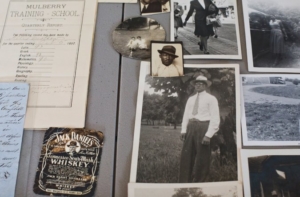
Thurgood Marshall
(The Guardian) The first African American to sit on the highest court is the subject of a film that retells his relentless and epochal quest to achieve racial justice in America.
By the time the US Supreme Court banned the death penalty in cases of adult rape, in 1977, Thurgood Marshall had been a justice on the court for 10 years. He wrote a brief concurrence in the case, Coker v Georgia, citing his opposition to the death penalty, which then as now disproportionately targeted African American men.
Marshall’s experience with capital rape cases, and specifically with cases of black men accused of raping white women, was uniquely deep. For while the later decades of his career found Marshall enrobed as the country’s first African American supreme court justice, in his early years he had virtually lived from a suitcase, crossing the country as an activist lawyer known for defending innocent black men from a system of white justice that craved their freedom and their blood.
Of the 455 men executed for rape between 1930 and 1972, 405 were African American, Marshall had noted in a separate court decision. Were it not for him, the number would have been even higher.
As a lead lawyer for the National Association for the Advancement of Colored People (NAACP), beginning in the late 1930s, Marshall would leave his home in Harlem, get a train from Pennsylvania Station and ride for days into hostile territory: Oklahoma, Florida, Texas, and Tennessee. His calling – and the NAACP was flooded with calls – was to defend against criminal charges and to represent plaintiffs in segregation, equal pay and voting rights cases.
In some criminal cases, Marshall might be able to win a life sentence instead of execution. In rare cases, he might win a not-guilty verdict. By the late 1940s, he was logging an estimated 50,000 miles a year, according to Gilbert King, whose Pulitzer-winning Devil in the Grove tells the story of Marshall’s defense of an infamous 1948 Florida rape case.
As a pantheonic civil rights figure, Marshall is best remembered for arguing Brown v Board of Education (1954), which struck a decisive blow against racial segregation in public schools, and for his later, historic ascent to the bench itself. Those towering achievements have mostly obscured his dramatic early years.
But the popular portrait of Marshall may be about to shift, with the release next week of a new film, Marshall, which tells the story of a salacious 1941 rape case in high-society Connecticut and of Marshall’s intervention at age 32 on behalf of the defendant, a butler-chauffeur named Joseph Spell. (more)
Black College Football Hall of Fame announces Class of 2018 finalists
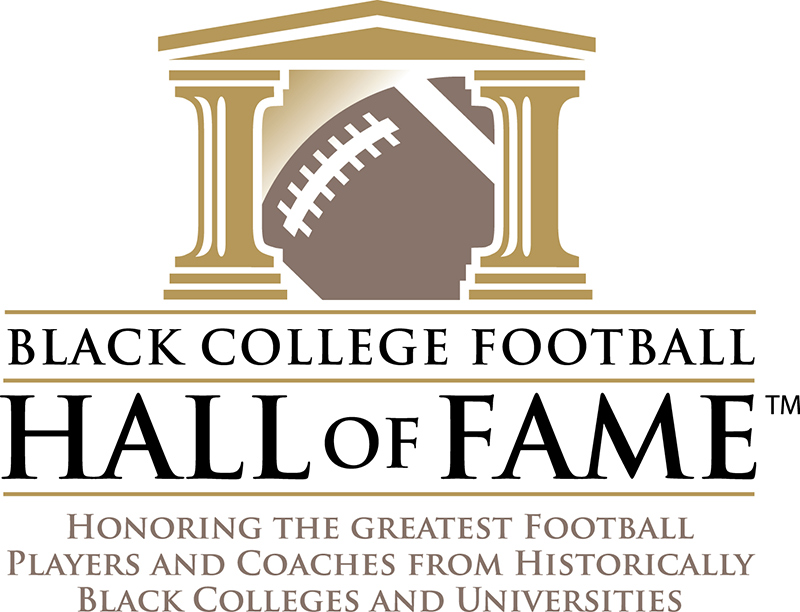
The Black College Football Hall of Fame has announced the 25 finalists for induction as the Class of 2018. The list includes 22 players and three coaches representing 14 Super Bowl rings, 18 NFL All-Pro selections, and, for coaches, 11 black college football national championships.
The finalists were selected from a field of over 150 nominees by a 12-member Selection Committee composed of prominent journalists, commentators, historians, former NFL General Managers and football executives. Five players and one coach will be announced as inductees on October 25. The Black College Football Hall of Fame Induction Ceremony will be held on February 10, 2018 in Atlanta.
“The talent that has come from Black College Football programs is incredible,” said Committee Chairman Roscoe Nance, “and that makes selecting the honorees incredibly difficult. Thanks to our Selection Committee for its dedication and commitment and for the tremendous amount of time and effort that the members put into making these decisions.”
Among the player finalists are: Emerson Boozer (RB, University of Maryland Eastern Shore, 1962-1965); Harold Carmichael (WR, Southern University, 1967-1970); Raymond Chester (TE, Morgan State University, 1966-1969); Hugh Douglas (DE, Central State University, 1991-1994); Thomas “Hollywood” Henderson (LB, Langston University, 1971-1974); and Everson Walls (DB, Grambling State University, 1977-1980).
The three coaching finalists are: Bill Hayes (Winston Salem State 1976-1987, North Carolina A&T 1988-2003); Arnett “Ace” Mumford (Jarvis Christian 1924-1926, Bishop College 1927-1929, Texas College 1931-1935, Southern University 1936-1961); and Joe Taylor (Howard University 1983, Virginia Union 1984-1991, Hampton University 1992-2007, Florida A&M University 2008-2012).
“We congratulate the Finalists for the Class of 2018,” said former Grambling quarterback James “Shack” Harris, Black College Football Co-Founder and 2012 Inductee. “Each of these Finalists made a significant impact on the game of football both in college and the professional ranks.” (Click here for complete list)
This Instagram is a time machine for Austin’s black, Latino communities
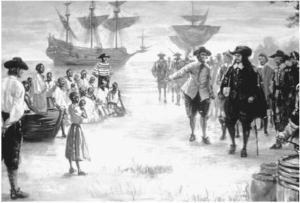
South Wall, Holly Street Power Plant Mural, 1993. Photo courtesy of Alan Garcia
(Austin American-Statesman) Ever wondered what Austin was like back in the day? Just pull up Instagram.
Alan Garcia runs ATX Barrio Archive, an Instagram account featuring photos and videos meant to preserve, share and teach the history of black and Latino communities around the Texas capital.
The page includes everything you can think of: restaurant flyers, murals, graffiti art, dance, music and media clippings.
Several images on the page show places which no longer exist. In April, a photo featured a ceremony outside of the Austin Community College Ridgeview campus, which closed in 1989.
“The archive should be considered their museum, their archive of their community,” Garcia said, referencing black and Latino residents of Austin. “We have to tell it ourselves, it’s up to us to share that history.” (more)
TIPHC Bookshelf
Published scholarship on black history in Texas is growing and we’d like to share with you some suggested readings, both current and past, from some of the preeminent history scholars in Texas and beyond. We invite you to take a look at our bookshelf page – including a featured selection – and check back as the list grows. A different selection will be featured each week. We welcome suggestions and reviews. This week, we offer, “Doris Miller, Pearl Harbor, and the Birth of the Civil Rights Movement,” by Thomas W. Cutrer and T. Michael Parrish.
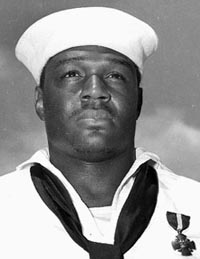
Doris Miller
On the morning of December 7, 1941, after serving breakfast and turning his attention to laundry services aboard the USS West Virginia, Ship’s Cook Third Class Doris “Dorie” Miller heard the alarm calling sailors to battle stations. The first of several torpedoes dropped from Japanese aircraft had struck the American battleship. Miller hastily made his way to a central point and was soon called to the bridge by Lt. Com. Doir C. Johnson to assist the mortally wounded ship’s captain, Mervyn Bennion. Miller then joined two others in loading and firing an unmanned anti-aircraft machine gun – a weapon that, as an African American in a segregated military, Miller had not been trained to operate. But he did, firing the weapon on attacking Japanese aircraft until the .50-caliber gun ran out of ammunition. For these actions, Miller was later awarded the Navy Cross, the third-highest naval award for combat gallantry.
Historians Thomas W. Cutrer and T. Michael Parrish have not only painstakingly reconstructed Miller’s inspiring actions on December 7. They also offer for the first time a full biography of Miller placed in the larger context of African American service in the United States military and the beginnings of the civil rights movement.
Like so many sailors and soldiers in World War II, Doris Miller’s life was cut short. Just two years after the attack on Pearl Harbor, Miller was aboard the USS Liscome Bay when it was sunk by a Japanese submarine. But the name – and symbolic image – of Dorie Miller lived on. As Cutrer and Parrish conclude, “Dorie Miller’s actions at Pearl Harbor, and the legend that they engendered, were directly responsible for helping to roll back the navy’s then-to-fore unrelenting policy of racial segregation and prejudice, and, in the chain of events, helped to launch the civil rights movement of the 1960s that brought an end to the worst of America’s racial intolerance.”
This Week in Texas Black History, Oct. 8-14
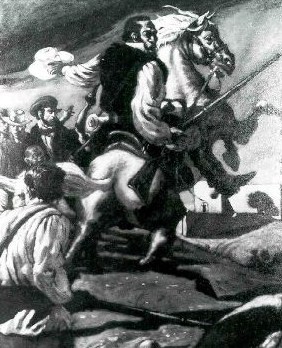
Samuel McCullough
Oct9
On this day in 1835, Samuel McCullough, a free black man, participated in the first offensive action of the Texas Revolution, in Goliad, and is considered the war’s first casualty. McCullough was born on Oct. 11, 1810 in Abbeville, South Carolinaand came to Texas with his father, who was white. McCullough joined the Matagorda Volunteer Company as a private and was severely wounded in the right shoulder during the Goliad confrontation as the Texans stormed the Mexican officers’ quarters. McCullough was the only Texan wounded in the battle.

Teresa Graves
Oct10
Singer and actress Teresa Graves died in a fire at her Hyde Park (Los Angeles) home on this day in 2002 at age 54. Graves, a Houston native, was a regular on “Rowan & Martin’s Laugh-In” comedy show in 1969 and 1970. She also starred in the television police drama “Get Christie Love” in 1974-75, making her the first black actress to have her own hour-long dramatic TV series.
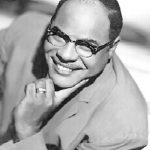
Ivory Joe Hunter
Oct10
On this day in 1914, Ivory Joe Hunter, R&B singer and songwriter was born in Kirbyville. Hunter was a teenager when he began touring as a musician. His first of several hit songs was “I Almost Lost My Mind,” which topped the R&B charts in 1950 and later that year “I Need You So” reached number 2. In 1957, “Since I Met You Baby” reached No. 1 and “Empty Arms” reached No. 2. Later in his career, he turned to country and western music and regularly appeared at the Grand Old Opry. A prolific songwriter, it’s estimated that Hunter penned more than 7,000 songs. Elvis Presley recorded two of Hunter’s songs that made the Top 20, “My Wish Came True” and “Ain’t That Loving You Baby.” And, in 1970, Sonny James cover of “Since I Met You Baby” was No. 1 on the country charts. Hunter is honored as a music legend in the Museum of the Gulf Coast’s Music Hall of Fame in Port Arthur. A Texas Historical marker honoring Hunter was erected near Magnolia Springs in Jasper County in 2009.
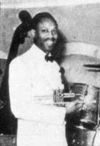
Milt Larkin
Oct10
Milt Larkin, bandleader and self-taught jazz trumpeter, was born on this day in 1910 in Navasota. Larkin began playing trumpet at age 16 and only 10 years later formed his own band in Houston after playing with Chester Boone. Larkin’s group, known as “the last of the great Texas bands,” included saxophonists Illinois Jacquet and Arnett Cobb and was compared favorably with Jimmie Lunceford and Cab Calloway. His popularity grew in New York where he led house bands at the Apollo Theater and the Celebrity Club.

Clifton Richardson
Oct11
On this day in 1930, Clifton Richardson founded and became editor/publisher of the Houston Defender, a weekly newspaper focusing on the city’s black community. Richardson had the same roles in 1919 with the Houston Informer. He was also a vocal supporter of civil rights and was a founding member of the Civic Betterment League (CBL) of Harris County and founding member and later president of Houston’s NAACP chapter.
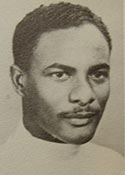
Herman Barnett
Oct12
On this day in 1950, Herman A. Barnett, III, an Austin native, enrolled as a regular student of the University of Texas Medical Branch in Galveston becoming the school’s first black student. However, in the previous year, Barnett had been accepted to the school but as a student in Houston at Texas State University for Negroes (now Texas Southern University), attending UTMB under a contract program between the schools. The program was stopped after the Veterans Administration (Barnett’s tuition was covered by the GI Bill) refused to recognize the contract system and Barnett’s attorney threatened legal action. Barnett became a prominent surgeon and anesthesiologist and was a graduate of Huston College (now Huston-Tillotson University) in Austin. During WWII, he was a Tuskegee Airman (332nd Fighter Group) and in 1968, became the first African-American to serve on the Texas State Board of Medical Examiners. In 1973, he was the first black elected president of the Board of Trustees of the Houston Independent School District.
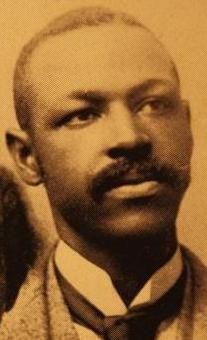
Monroe Alpheus Majors
Oct12
Physician Monroe Alpheus Majors was born on this day in 1864 in Waco. Majors was also a civil rights leader and writer. He attended Tillotson College (now Huston-Tillotson University) in Austin, but graduated from Central Tennessee College in Nashville then enrolled at Meharry Medical College and graduated as salutatorian of his class in 1886. He was one of the founders of the Lone Star State Medical, Dental, and Pharmaceutical Association, one of the first medical societies in the country for black physicians. In 1888, fearing for his life after racist threats because of his influence in the community, he moved to Los Angeles and became the first black physician to practice medicine west of the Rocky Mountains. He returned to Waco in 1890 to practice medicine and serve as lecturer in hygiene and sanitation at Paul Quinn College, and also built and operated a hospital for blacks. As a writer, he published Noted Negro Women (1893), a book of biographies of prominent black women of the period, and in 1921 wrote First Steps and Nursery Rhymes, the first book of nursery rhymes written specifically for black children.

Doris Miller
Oct12
On this day in 1919, Pearl Harbor hero Doris (Dorie) Miller was born in Waco. Miller was a mess man aboard the USS West Virginia when the Japanese attacked on Dec. 7, 1941. Miller moved several wounded sailors to safety and then manned an anti-aircraft gun, for which he had no training, and fired at attacking planes. For his actions, Miller was the first African-American to be awarded the Navy’s second highest honor, the Navy Cross. (Note: Please see TIPHC Bookshelf for “Doris Miller, Pearl Harbor, and the Birth of the Civil Rights Movement.”)
Oct13
In 1875, on this day, Adam (or, “Adan”) Paine (1843-1877), a black Seminole, was awarded the Congressional Medal of Honor. Paine was a scout at Fort Duncan, Texas, and received the MOH for his actions during a battle at Quitaque Peak where he defended himself and four other scouts against several bands of Comanche Indians on September 26, 1874. Greatly outnumbered, the scouts fled, fighting as they went, though Paine held back to protect the others, allowing them to get away as he fired repeatedly at their pursuers. Payne’s horse was shot from under him, however, Paine continued to fight and eventually shot the rider of one horse, mounted the animal and made his escape. Thanks to his efforts during the engagement, all of the scouts survived. Paine’s commanding officer, Colonel Ranald S. Mackenzie, said that Paine “has more cool (and) daring than any scout I have ever known.”
Oct13
On this day in 1864 the Elm Creek Raid occurred, during which a band of several hundred Kiowa and Comanche Indians raided a settlement in the Elm Creek Valley (northwest of Dallas and South of Wichita Falls) where Britt Johnson, a ranch foreman and former slave, and his family lived. During the raid, Johnson’s son, Jubal, was among several settlers killed. Johnson’s wife, Mary, and two daughters were among the hostages taken into Indian Territory (Oklahoma). Johnson spent the next year traveling into the Territory and finally locating his family. Johnson worked with Comanche Chief Asa-Havey to pay a ransom and regain his family. The story of Johnson’s quest (fact or fiction) was the inspiration for Alan LeMay’s 1954 novel, The Searchers, which director John Ford would turn into a movie of the same name in 1956 starring John Wayne.
Blog: Ron Goodwin, Ph.D., author, PVAMU history professor
Ron Goodwin’s bi-weekly blog appears exclusively for TIPHC. Goodwin is a San Antonio native and Air Force veteran. Generally, his column addresses contemporary issues in the black community and how they relate to black history. He and the TIPHC staff welcome your comments.
Latest Entries
A New Hope
Forgive me for borrowing the title of one of the most profitable films in history, “Star Wars: A New Hope.” I’ve always been enamored by space. I’m a child of the 1960s and I remember playing with my Major Matt Mason action figure (not a doll!) as my family and I watched Neil Armstrong step onto the moon and state “one small step for man, one giant leap for mankind” in 1969. I still [...]
Tell me the truth
Democracy – a) government by the people, b) a government in which the supreme power is vested in the people and exercised by them, directly or indirectly through a system of representation usually involving periodically held free elections. Merriam-Webster Dictionary There were many things I learned from my father. He taught me how to change the oil in my car, paint a house, and even how to get the pretty girl at a party. [...]
Submissions Wanted
Historians, scholars, students, lend us your…writings. Help us produce the most comprehensive documentation ever undertaken for the African American experience in Texas. We encourage you to contribute items about people, places, events, issues, politics/legislation, sports, entertainment, religion, etc., as general entries or essays. Our documentation is wide-ranging and diverse, and you may research and write about the subject of your interest or, to start, please consult our list of suggested biographical entries and see submission guidelines. However, all topics must be approved by TIPHC editors before beginning your research/writing.
We welcome your questions or comments. Please contact Mr. Michael Hurd, Director of TIPHC, at mdhurd@pvamu.edu.
